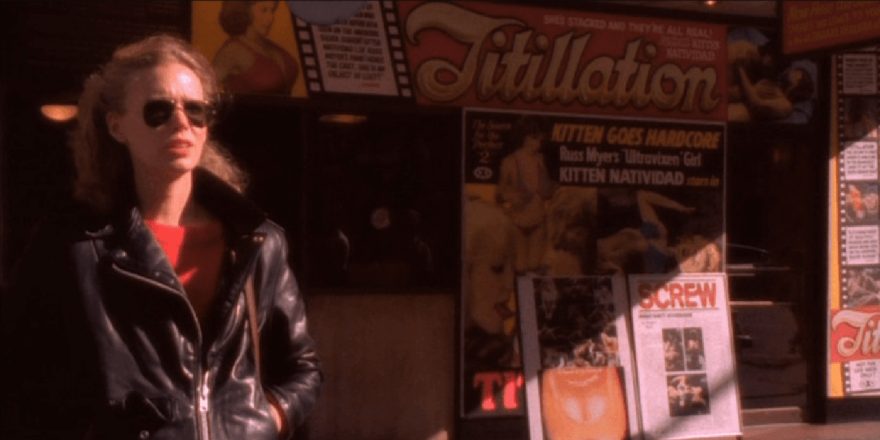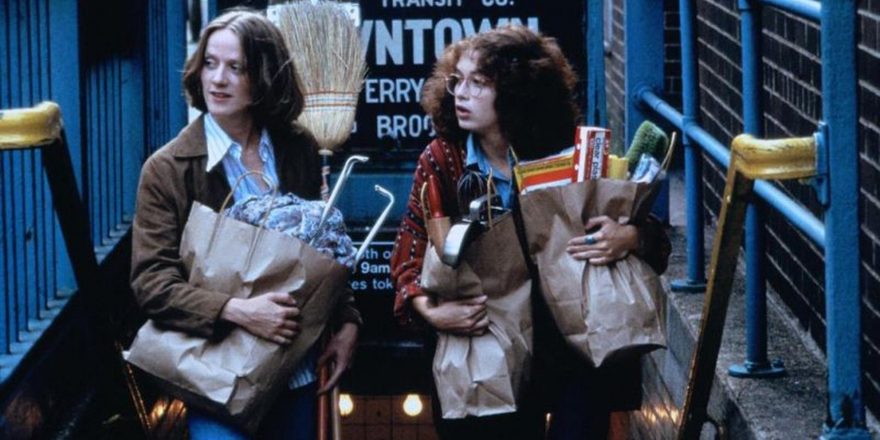In 1980, I moved back east from Madison, Wisconsin, to New York City, and to Tribeca, which at the time was a neighborhood empty of people, except for artists, and looked like a studio lot. As a visual artist and filmmaker, I was attracted to the underside of New York, the city I’d seen in movies like The Naked City or Sam Fuller’s Pickup on South Street. Film noir was always an appealing genre for me. Not only for its half-lit streets, but also for its female characters who possessed a dangerous, unrestrained sexuality. I was attracted to the moral ambiguity of the genre. Hitchcock films interested me because of their obsessional quality – Vertigo, Strangers on a Train, Rear Window.
When I directed my debut feature, Variety, I thought, “What if I turned the genre of the noir thriller on its head, and decided to make a woman the investigator and the male the enigmatic figure?” I was interested in disrupting the conventions of the genre, particularly the narrative function of the woman. I set up situations in the film where the woman is expected to be vulnerable. But, instead, she transgresses the limits, following and surveilling the man; he, not she, will be the enigma to be pursued and tamed.
Exploring New York City, the underground late at night, I came upon the Variety Theatre, its neon marquee something out of the past. I couldn’t stop looking. I wanted to investigate it. The Variety had once been a vaudeville house, and before that a stable for the Stuyvesant family. Now it was a porn theater. Like in the noir films I loved, the city plays an important part in Variety. More than just a setting or an environment, I wanted to make New York City a character in the film: the garish nighttime quality of Times Square, the hyper-real, overly lit look of the Fulton Fish Market, the baseball game at Yankee Stadium.
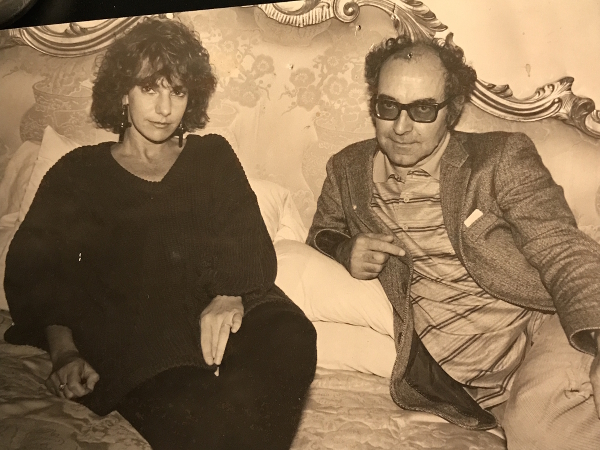
Returning one night from an after-hours club, my taxi took a detour to the South Street Seaport. It was 4 a.m. and there before me, as bright as the day, was the Fulton Fish Market. It was like seeing Las Vegas from a distance when you are driving through the desert in the pitch dark – a white ball of light, and a hive of activity in the still of the night. It was a universe unto itself. I got out of the cab and walked around for two hours, observing the fishmongers setting up their cardboard signs to sell fish wholesale to restaurants and buyers. I was the only woman in a sea of men.
On our first day of shooting, we were in Yankee Stadium during the playoffs – Red Sox and Yankees. Born in Boston, I’m a Red Sox fan, but I root for the Yankees when they are not playing the Sox. It was crazy and chaotic. We’d gotten permission to shoot in a private booth, claiming we were making a film about life in New York, so there we were, with champagne for the scene, and my cinematographer, Tom DiCillo, setting up lights. We rehearsed and shot a few takes. The game was in full swing, and all of a sudden a manager burst in, screaming, “Your lights are in the player’s eyes.” He explained that unless we could film without the lights, we’d have to stop shooting. We were using 16 mm color negative 7247, a beautiful film stock but not that sensitive to light, but we were able to get our shot. Luckily the game went into extra innings and, in a way, this limitation was a creative inspiration. Our actors were somewhat silhouetted, and the players on the field looked incredible, bright and surreal, like a Hitchcock backdrop of rear-screen projection, like the race track in Notorious or the crop duster scene in North by Northwest.
But we were actually there. It was so exciting.
The next sequence takes us beneath the Triborough Bridge, a chase scene with a haunting score by John Lurie in true noir style. Many of the artists, filmmakers, and musicians from the ’80s such as John have discussed the collaborative nature of the art world at that time: people helping with each other’s projects, the flow between different art forms – playing instruments with no training, musicians as actors, actors as cinematographers, and all combinations. I think it was because the ’80s were not market-driven (there was no market for what we were doing), so nobody was thinking about making money, casting famous people or selling to mini studios. … We were creating our own venues, clubs, exhibition spaces – and the financial aspect just didn’t figure. This created a certain kind of freedom and our world then was small: below 14th Street, from the Lower East Side through Soho and Tribeca. It was easy to meet people; everyone lived in a concentrated area, everyone overlapped in one way or another.
Kathy Acker was reading one night at The Kitchen, a performance space. I had seen her read before; she had guts and style and irreverence, she was sexy and tough. She boldly owned her sexuality and spoke out loud what others would not. I had been a fan of her book Kathy Goes to Haiti and I wanted to work with her. After the reading, I introduced myself and made her a proposition: “Will you become my collaborator and screenwriter on my new film?” I told her the story was about a woman who gets a job selling tickets at a pornographic movie theater and begins following a man who frequents the theater. She said yes immediately. Working with Kathy was fun. I wrote the treatment, and she wrote cut up scenes – not really a script, but an Acker version of a script – and told me if I changed one word, she would kill me. But words always change when you make a film, and Kathy was extremely happy with what I directed. She had wanted the weightlifter from Mapplethorpe’s photographs, Lisa Lyon, to play the lead, Christine. I cast my version of Kim Novak, Sandy McLeod. When Kathy came to set and met Sandy, she said, “She’s perfect!”
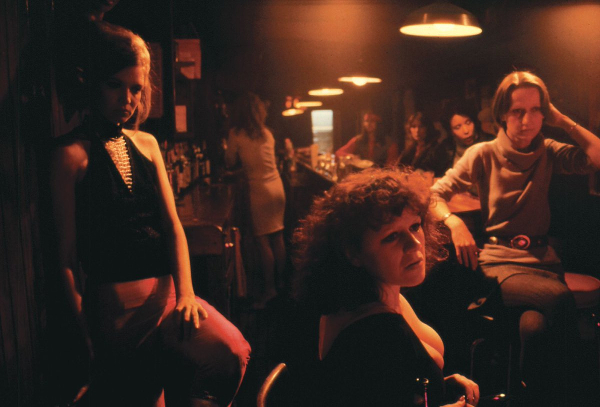
Nan Goldin was already a friend, a character in my life, the person I could talk to at the bar, the person I was drawn to. I asked her to play a character similar to herself in the film, and to take stills while we were shooting. Nan had been in a scene in my previous film, Empty Suitcases. Working with Nan was charged, and so we picked up where we left off. But also, Tin Pan Alley, the bar where Nan worked, became a central location in Variety.
The stories of the women who came in to hang out at Tin Pan Alley found their way into my film – for example, Norma, the Puerto Rican woman who tells the story about being arrested, and Sally, who was also a bartender, with her tale about the woman who ripped off her wig and was completely bald. Nan was a guide for me, bringing me into her circle of bartenders, sex workers and Times Square characters. Through Nan I met Maggie, the owner of the bar, who was married to a gangster, Steve, through whom I met the guy who owned the porn store where we shot a few scenes.
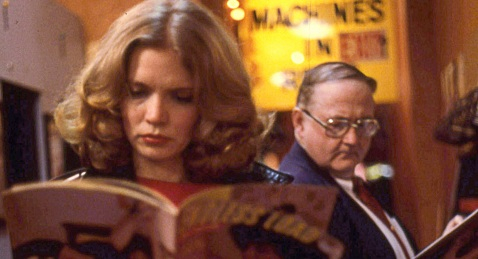
I used to go to the porn stores and sex shops in Times Square. There were only men in these stores. I wanted to go where other women didn’t go. I wanted to invade male spaces, like the Fulton Fish Market, Yankee Stadium, Wall Street. I wanted to look back at them looking at me. In one store, there were magazines and sex booths in the back. After putting my 25 cents in a machine behind the curtain and checking out the three-minute peep show, I stopped to look at some magazines. The owner of the store asked me to leave. “Why should I?” He said I was making the men nervous. And he wondered if I was trying to proposition the guys. It was OK for a woman to be an image in a magazine or on a screen, but a real woman in their space was too disruptive.
With my tape recorder, I recorded the voices of the men outside the porn shows on 42nd Street: “Come upstairs and treat yourself … Don’t be shy … The most beautiful girls in the world … All live on stage.” It was a chant, it was repetitive, it was enticing. It reminded me of carnival barkers luring passersby to play their games.
I went on the train to Asbury Park, which became such an important location for me. It reminded me of the scene in They Live by Night, a 1948 film by Nicholas Ray, when the couple is running away from the law and they hide amongst all the people at the amusement park. In Asbury Park, I discovered the bright pink Flamingo Motel, and just across the street, the vibrant green exterior of the amusements. When we were filming there, I could feel a sense of the past. Tom DiCillo caught a moment in time as Christine walks out of the amusement park; the sun had set, and the light was perfect. In the Flamingo, we see Christine return to her room with the porn magazine that she stole from the room of the man she’s following, Louie. Nan took a black-and-white still photo while we were shooting – Christine lying on the bed with the magazine, Tiny Tits and Cute Asses.
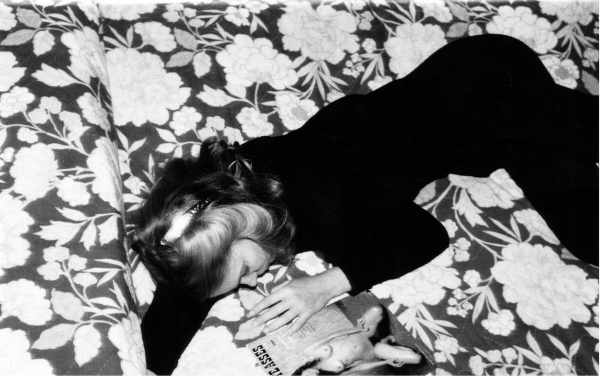
Many of us had read Laura Mulvey’s 1973 essay “Visual Pleasure and Narrative Cinema,” about the way in which pleasure is structured in classic Hollywood cinema. Mulvey establishes that film is a voyeuristic medium, its appeal lying in its visibility, its quality of being there to be looked at. Film plays on the voyeuristic fantasies of the viewer, who is constructed as a male.
The pleasure in looking in classical narrative is connected with the centrality of the image of the woman. With Variety, I decided to make a film about looking, to use the Variety Theatre to explore ideas about voyeurism, obsession and desire, using pornography as a backdrop to weave those themes in a noir-like story about a woman who looks back. The subject of the film is desire, not pornography.
When Variety was first shown, the most controversial aspect was not actually the inclusion of porn or the fact that I was embracing porn as a kind of expression. More disturbing to people was the ending, which didn’t provide an absolute conclusion. The dark, empty street with lamplight on wet ground, the last shot of the film, says that between desire and gratification lies an empty space – but that space is full of possibilities.
All images courtesy of Bette Gordon.



